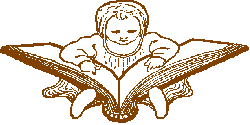
PSYCHOHISTORY
Articles & Texts
[Books texts] [Journal Articles] [Charts] [Prenatal]
[Trauma Model] [Cultic] [Web links] [Cartoons] [Other]
 |
Digital
Archive of PSYCHOHISTORY Articles & Texts [Books texts] [Journal Articles] [Charts] [Prenatal] [Trauma Model] [Cultic] [Web links] [Cartoons] [Other] |
By: Karen Taylor
Special Issue
"On Writing Childhood History"
The Journal of Psychohistory 16 (2) Fall 1988
It seems to me that the history of childhood is essential to the understanding of the history of any culture or society. The treatment and socialization of children demonstrates not only how people feel about their children but also what it is that their culture values and seeks to perpetuate. If you do not understand a society's values you cannot hope to understand its political, economic, or social actions.
I became a historian of childhood because of my interest in the history of family violence. My analysis of spouse and child abuse in Australia and America brought me quickly up against the wall of definition: the same behaviors were not considered abusive universally, nor consistently over time. This led me to examine notions of good and bad punishment through the analysis of childrearing practices and childrearing philosophies, and what I found was that families did not choose the way they wanted to treat their children from an infinite variety of options. They were directed in their choices by the economic, political, and social structures of their time. Behaviors became defined as abusive only when they failed to perform the socializing functions which were dictated by those structures.
Beginning in the late eighteenth and early nineteenth century, for example, children in Western society became the focus of more attention and affection in the family. While this may be evidence that the child achieved heightened importance in the family and therefore in the socie-ty, if we look at what happened to other members of the family concurrently with that change in children's status we can see other possible explanations. That elevation of status happened at roughly the same time people began spending more time outside of the home in paid occupations; it also corresponds to the time when women were being given in-creased responsibility for the family-and particularly childrearing responsibility. The apparent raise in importance or the child may therefore have had the consequence of tying women more firmly to the family, or, to put it another way, it may have been a mechanism to en-trench women in the home. Children may have had an exalted emotional position in the family which was a consequence of the fact that society wanted women in the home and had nothing whatever to do with bettering
children's lives for their own sakes. Their new status did not give children more control over their own lives or defenses against abuse. In Australia and America it did affect how abuse was defined, however: "cruelty" to children was neglect of children, and neglected children were those whose mothers were too busy doing other things to tend to their children. The moral of course was that women needed to stay home with their children. It was no coincidence that this was where the economic structures and social expectations of the day required them to be. The history of childhood therefore shed light on the nature of family relationships and through them the dynamic of community social relationships.
But the history of childhood is not an attempt to prove whether or not childhood has been abusive: that it has or has not is not a very interesting or enlightening conclusion by itself. Since abuse is defined socially, what we call abusive today-using psychoanalytic methodology or any other kind-may not be thought of as abusive tomorrow, just as the things we accept as "normal" today may be interpreted as monstrously abusive tomorrow. The history of childhood, like other fields of history, is an attempt to illuminate the whole of a time and place.
Ultimately the relationship between parents and children is a power relationship. Parents / guardians / teachers / employers have the power to socialize children - to control the course of their lives and their life and death-and children have relatively little power. What happens to them therefore generally has little to do with them.
There is still much that we do not know about children and their lives in the past. Fortunately, the teicture of their lives is available to us in abundant sources. It can be found by looking at what people say about children and how they define childhood, what kinds of crimes children are tried for committing, what kinds of punishments they receive (both institutional and familial), what the age of consent, the age for drinking, the age for laboring, and so forth are, who has custody of the child and why, where children live and sleep, what kinds of diseases they get, when and of what they die, what occasions celebrate them, what they buy, how they are dressed, what they eat, what they play with and what games they play, what they read, and what sorts of images of them are prevalent: who are good children and who are bad? By filing in the childhood piece of the history puzzle we may come to realize that what we thought was obvious was in fact only partially visible.
Karen Taylor, Ph.D., teaches at the College of Wooster, Wooster, OH 44691.
Special Issue
"On Writing Childhood History"
The Journal of Psychohistory 16 (2) Fall 1988
 |
Digital
Archive of PSYCHOHISTORY Articles & Texts [Books texts] [Journal Articles] [Charts] [Prenatal] [Trauma Model] [Cultic] [Web links] [Cartoons] [Other] |
To report errors in this electronic
transcription please contact:
[email protected]